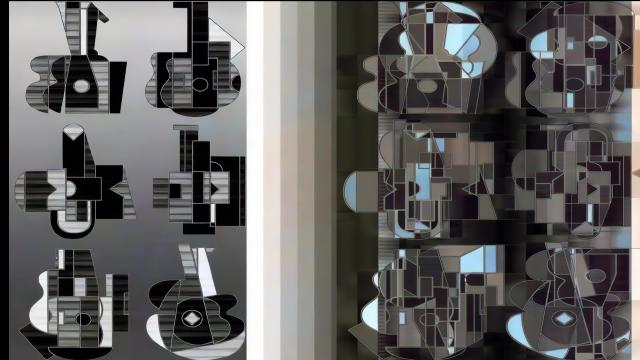Nick Fudge, a Young British Artist (YBA) from London, UK, is widely recognized for his rebellious and enigmatic approach to art. Nicknamed a "rebel" by Jack Malvern of The Times, Fudge built his reputation by defying convention. He famously destroyed his work at Goldsmiths on the eve of graduation and later secretly worked on digital projects that anticipated entire fields of digital materialism and media archaeology.
A pioneer of digital art, Fudge was among the first artists to incorporate core desktop technologies into his work. He allegorized Adobe Photoshop's transparent layers, macOS Chrome, custom vector GUIs, timeline interfaces, and user command structures as foundational materials. By the mid-1990s, he was integrating editing languages, interface logic, and file architectures into his art. This predated the widespread recognition of media archaeology by at least five years, and he explored digital materiality nearly a decade before it became a central focus in art discourse. Fudge’s recursive, hybrid digital practice anticipated many of the concerns that would later define “post-Internet art,” developing these themes more than a decade before the term entered the mainstream art lexicon. Grounded in conceptual rigor and technical experimentation, his approach gives his body of work a unique resonance in today's environment, where the history and future of digital art are constantly negotiated.
Fudge’s digital oeuvre is a living archive—recursive and always in flux—that eschews static final outputs for continuous editing and conceptual iteration. In line with Duchamp’s call to work "underground," Fudge withheld his digital works from exhibition for over two decades, using this creative obscurity to experiment with emerging software and cultural forms. Trained as a painter, Fudge brings an acute sensitivity to medium specificity, treating digital files as autonomous materials—unprinted, unflattened, and fundamentally original. This stance, decades ahead of the NFT market, renders his digital corpus genuinely collectible in the present crypto era.
Recent highlights include his conceptual digital intervention in the Lop Nor Desert in China—a project that was not shown to an audience, but was documented as a landmark in digital conceptual art—and an ongoing confidential art/science tech collaboration with partners in Beijing. Fudge’s work remains a touchstone for artists and theorists interested in the recursive life of digital art, the poetics of the file, and the ever-evolving relationship between image, interface, and archive.
Official website: https://www.fudge.studio/




